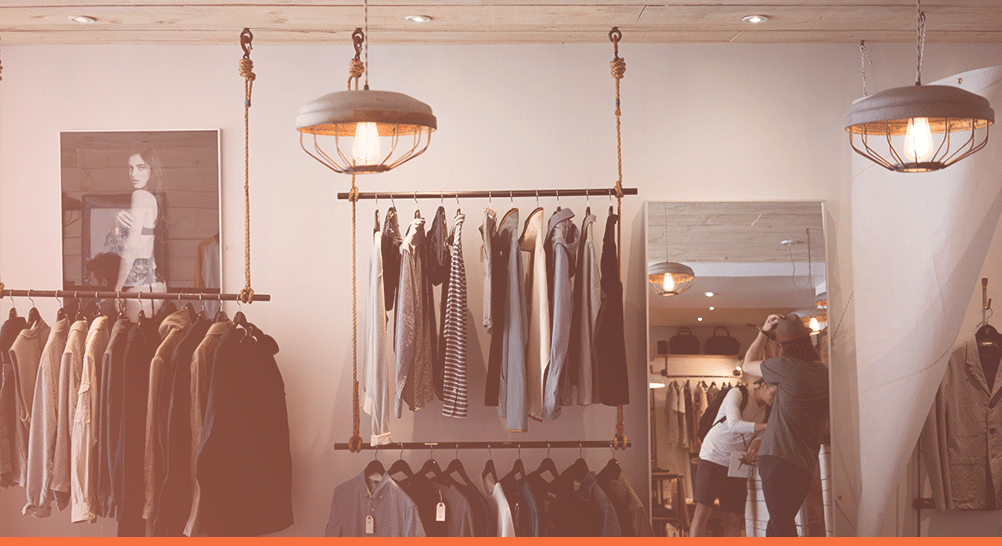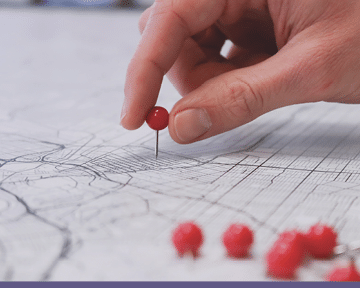How can visual merchandising illustrate possibilities for consumers?
Foster visualizing with creativity
Visualizing what is possible through the five senses
Visualizing the journey
Creating time and space to visualize
Aligning what is and what is possible with testing
How can visual merchandising illustrate possibilities for consumers?
It was once believed that a beam of light came from the eye. The word visual stemmed from this belief, referring to what emanated from the eye rather than to what the eye ingested or saw. Visual merchandising in retail iterates on this definition; it is the arrangement of goods in a way that is appealing to shoppers. But it is not so much about shaping what consumers see as it is about shaping what consumers desire – about what emanates from consumers when they engage with visual merchandising. Perhaps a better word to use would be visualize, engendering the question: how does visual merchandising help consumers visualize themselves with a product?
The word visual is concerned with what is, but visualize is concerned with what is possible.
A visual merchandiser understands that the consumers’ ability to visualize themselves with a product increases their likelihood of purchasing that product, and what consumers see is not necessarily the same as what consumers internalize. Many things, therefore, go into creating a visualization arena for shoppers. And while it can be tricky to anticipate what will or will not resonate with each person, modern testing software makes it easy to test what will attract and what will deter consumer interest.
Foster visualizing with creativity
Creativity is often the seedbed for visualization. Because it takes a certain amount of imagination for consumers to visualize themselves with a product, it also takes a certain amount of imagination for a visual merchandiser to find ways to appeal to a user. The more unique a shopping experience, the more unique the user’s connection to the products will be. Brainstorming innovative consumer-product interactions could be the key to successful sales, but with any innovative idea, before spending big money on it, test it.
If you are looking for some ideas to kickstart your creativity, here is a list of potential ways to get your consumers visualizing their lives with your products.
Visualizing what is possible through the five senses
Creating an interactive visual arena requires an appeal to all five senses. While the metaverse intends to replicate this via virtual 3-D, brick-and-mortar retailers currently have a significant merchandising advantage when it comes to sensory experience. Studies have shown that the more senses that are activated when consumers interact with a brand, the more consumers will connect those sensory memories with and create a stronger bond with that brand. Finding ways to engage all five senses can therefore increase consumer love.
Sight
Sight is the sense that correlates most directly with the concept of visualization. Visual merchandisers can capitalize on sight’s influence on buying decisions in multiple ways:
Color
Much research has been done on the ethos of color, and the results are as diverse as the color palette itself. Earthy tones, for example, can be seen as outdoorsy and rustic, like wood and leather, or indoorsy and comforting, like chocolate and caramel. Every color will have a different connotation for every person, depending on each person’s experiences and preferences. The best rule of thumb in using color is to 1) connect the color choices with the brand and tone of the company or display, and 2) direct the consumer to perceive the color in this context through other visual cues. For example, if outdoorsy is part of your tone, use brown in a nature-driven context within the store or display. Also, be aware that even the names of colors can impact how consumers visualize a product. A consumer may prefer to visualize a jade-colored pillow in their home rather than a light-green throw pillow, for example.
Lighting
Lighting also plays an important role in sight and perception. From ornate to subtle fixtures, to soft and bright light, lighting can impact feelings of warmth or boldness. Light can also be used to spotlight a product or create emphasis. The light bulb is often associated with enlightenment or innovate ideas; hence, it should come as no surprise that our ability to visualize ourselves in new contexts and with new products is impacted by lighting.
White space and cleanliness
When it comes to product presentation, there can be too much of a good thing. Overstocked shelves or clutter can make it hard for the brain to know what to focus on and create a sense of disorientation or confusion. For those who shop as a means of minimizing chaos, a disheveled setting can be a deterrent. Creating space to breathe allows consumers to find respite, and a calmer mind is more open to envisioning and personalizing a product’s potential.
Window displays and mannequins
Another effective way to promote visualization is to exhibit the different possibilities surrounding a product’s use. Window displays can present products in distinct ways that capture a consumer’s imagination. And mannequins are essentially a blank slate when it comes to presenting fashion variations and options.
Interactive Displays and Mirrors
Mirrors are the simplest and most immediate way for a user to see themselves with a product. But interactive displays are gaining headway and popularity. These displays may be tech-based, enabling a consumer to virtually try on a product. Or they may include tangible props such as on-site photography studios that allow consumers to take social media pictures of themselves with the product.
Sound
Another integral piece to creating a visualization arena is sound, and more specifically, music. Music is the backdrop – or soundtrack – to our lives. Music creates mood similarly to how color creates mood; it can enliven or relax, motivate or distract. Music moves us. Rarely is a movie or video clip made these days without background music. Integrating appropriate music into the shopping experience can make a difference. However, be sure to pay attention to the volume and style of music, ensuring alignment with both your tone and the brand, and be aware that too much sound can be overstimulating; seek the right balance between quietude and movement.
Taste
A hungry customer can be a hangry customer. Maslow’s hierarchy of needs teaches that when basic needs, such as hunger, aren’t being met, higher needs become less pertinent. If visual merchandisers seek to gain consumers’ focus, it may be helpful to ensure their basic need to eat is met, which can be as simple as installing candy machines or as grand as installing a small café. Promos can also include food samples, enabling consumers to experience a food-based product first-hand.
Smell
Smell is not the first sense we consider when we hear the word visualize. But it is an important part of an immersive experience, being strongly affiliated with emotional responsiveness. Because of this connection, branding expert Martin Lindstrom believes, “of all the senses, smell is the most persuasive.” Finding ways to integrate scents into a shopping experience can therefore contribute to consumer-brand bonding.
Touch
Being able to feel a product can influence a consumer’s willingness to envision that product’s potential. By handling a product, a consumer can quickly assess if it is sturdy or flimsy, soft or itchy, full or empty. Hands-on experiences with products are hands down one of the most effective visualization strategies.
Visualizing the journey
The layout of a store also impacts consumer interest. Upon entering a store, consumers will make an effort to find what they need. Knowing this, it may be wise to place items that users want but do not need at the front of the store, attracting their attention to appealing items they might not otherwise seek out.
Planograms are schematics that aid in mapping out product placement and floor layouts. Planogram software can assist in creating optimal user journeys through in-store spaces. However, implementing layout designs can be costly. Before acting on planogram designs, it is always prudent to utilize A/B testing software to test which design will be most effective.
Creating time and space to visualize
Many lives are hectic. Time and energy come at a premium, but everyone needs spaces to rest and something to focus on while they unwind. Consider establishing environments where consumers can take a break. Ensure that these spaces are both relaxing and interesting. In-store pharmacies, for example, could consider placing reading material, calming products, or toys close to spaces where patients and young children may find themselves waiting for a prescription. Fitting rooms could have external seating with interactive displays for patrons waiting for a partner, friend, or child to try on clothes. There are multiple ways to provide space to rest while also highlighting product possibilities.
Aligning what is and what is possible with testing
In-store shopping experiences provide an opportunity for users to engage with products in ways that two-dimensional online experiences cannot currently provide. With hands-on interactions, consumers can see what a product is, and visual merchandising in retail can help move consumers from merely seeing what is to seeing what is possible – to visualizing themselves with a product.
When it comes to ideas on how to achieve this, the sky’s the limit. But some of these strategies are likely more effective than others. Trial and error isn’t the best means of establishing visual merchandising efficacy, but conducting reliable testing is undoubtedly a sure-fire way to know exactly which of your innovative strategies will empower the imaginations of your consumers.
To learn more about effective testing methods and options, check these articles out:
Test today when others won’t, so tomorrow you can succeed where others can’t
A bad test is worse than no test at all
Woolworth’s innovates to improve its customer experience
Creating a culture of A/B testing




